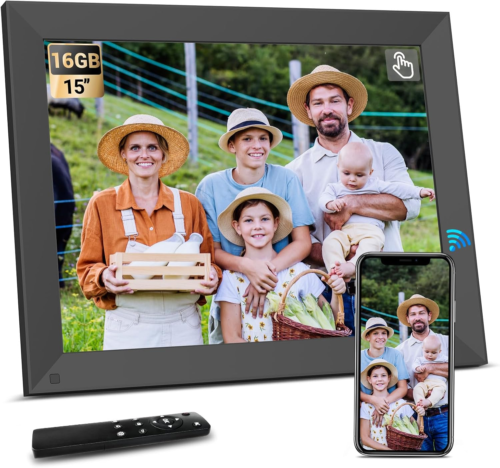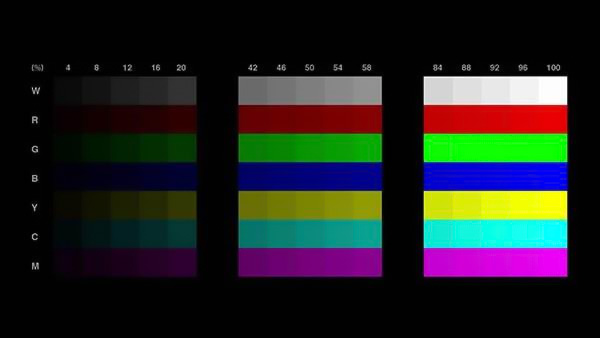
Table of contents
Defining the Digital Picture Frame
In its most basic terms, a digital picture frame is an electronic gadget meant to show digital photographs on a display screen, taking the place of static paper photographs of the conventional frame. It’s typically a square device, 7 to 15 inches diagonally, with an LCD or LED display powered by electricity or a rechargeable battery.
Unlike a stand frame, however, it’s not fixed. It displays pictures, typically stored on internal memory, a USB drive, or an SD card, and it gives you a rolling slideshow of memories.
The concept came about in the late 1990s, but modernized versions gained popularity wildly. A 2023 Statista report noted that 25% of US households now own a digital frame, up from 15% in 2020, due to their growing popularity. They are not just photo keepers; they are entertainment centers on an individual basis, combining technology and nostalgia.
How Does It Display Photos?
The core of a digital photo frame is its display, typically having a resolution of 800×600 to 1920×1080 (Full HD). More expensive ones employ IPS panels, providing 100% sRGB color accuracy and broad 178-degree viewing angles, so your sunset photos appear vibrant from any room corner. Brightness is between 200 and 350 nits, making it visible in standard indoor lighting, although direct sunlight may wash it out.
Photos are imported by physical media like USB or SD cards—normal capacities are 8GB to 32GB, holding hundreds to thousands of photos—or by wireless via Wi-Fi. An inexpensive 10-inch model with 8GB would hold 2,000 images at 1MB a piece, whereas a Wi-Fi model plugs straight into cloud storage like Google Photos.
Power comes by means of a 5-15 watt adapter, and it takes the same kind of power as a small LED light, so it’s ideal for continuous use.
What Features Set It Apart?
What sets a digital photo frame apart from a screen is its feature set. Most support slideshow modes, enabling you to define transitions every few seconds or minutes, with options like fade or shuffle. Many support video playback (e.g., MP4 at 720p) and audio via built-in speakers, typically 2-5 watts, adding life to vignettes of family parties.
Touchscreens, on more expensive models, enable you to swipe through albums or tap to pause, simulating the convenience of a tablet.
Wi-Fi capability is a game-changer. Frames with Wi-Fi capability will sync with apps or email, allowing friends to send photos remotely—picture grandma smiling photos from her trip directly to your living room. A 2024 TechCrunch survey discovered that 60% of users appreciated this for staying in touch.
Some even display clocks, calendars, or weather, making the frame a multi-purpose display.
What Are Its Uses in Everyday Life?
In living rooms, digital picture frames are memory boards come to life. Place one on a mantel, and it scrolls through years of birthdays, weddings, or vacations, keeping memories current without cluttering shelves. They’re gift concepts with emotion—fill one up with family photos for a parent or spouse, and it’s a memento that updates itself.
Companies use them too; a coffee shop may display local artwork or specials on a 15-inch frame, drawing eyes with motion.
For the visitor or minimalist lover, battery-powered types (e.g., 2000-5000mAh, 4-6 hours) have freedom, exhibiting pictures of a recent stroll without a cable. They’re not just decorations; they are storytellers, blending in with your mood and aesthetic.
What Are the Limitations
No phone is perfect. Budget frames have no Wi-Fi, so you’re left to upload manually, and storage restricts how many photos you can keep—8GB fills up fast with high-res files.
Quality of the screen varies; a budget 800×600 screen will look like pixels to a 1080p phone screen. Power needs a source nearby unless it’s battery-powered, and Wi-Fi versions require constant internet, a hitch in rural areas. However, these are minor sacrifices for most.
Why Does It Matter Today?
A digital photo frame is a compromise between analog sentiment and digital convenience. At the time of writing in 2025, with photo libraries ballooning on phones (an average user has 2,500 photos, says a 2024 IDC report), it gives a way to enjoy them without scrolling.
It’s technology that is intimate in feel, converting static walls into dynamic galleries. We at ONext see it as a modest but mighty update—easy, intelligent, and timeless. Gift or home decor, it’s a window to your world, with a frame made of pixels.




